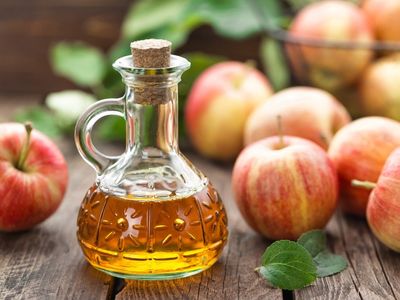Vinegar flavored with fruit, or fruit infused vinegar, is a simple process as long as you adhere to a few rules. Read on to learn about flavoring vinegar with fruit.
About Flavoring Vinegar with Fruit
Vinegar has been used for centuries with the first evidence documented about 3,000 B.C. by the ancient Babylonians. Initially, it was made from fruit such as dates and figs as well as beer. Fast forward and vinegar is now a hot commodity, flavored with fruit such as:
BlackberriesCranberriesPeachesPearsRaspberriesStrawberries
When flavoring vinegar with fruit, it is advisable to use frozen fruit. Why? Frozen fruit works better than fresh because the cells of frozen fruit have already begun to break down, thus releasing more juice. As to what vinegar to use when making fruit infused vinegar, there are distinctions. Distilled white vinegar is clear with a sharp acidic taste and is the best choice for delicate herb infused vinegars. Apple cider is milder in flavor but has a less than desirable muddy, amber hue. Apple cider vinegar, however, does blend best with fruit. Better yet, albeit more costly, are wine or champagne vinegars whose colors are more pleasing to the eye. Wine vinegars contain protein that fuels the growth of bacteria when not stored or handled properly though.
How to Make Fruit Flavored Vinegar
Flavored vinegar recipes often contain additional flavoring components such as herbs or spices like mint, cinnamon, or citrus peel. You can also play around with flavor combinations. Crushing, bruising, or slicing herbs and fruit can hasten the infusion time, but it will take at least ten days for the vinegar to come to fruition. Here’s the process:
Thoroughly wash fresh fruits before use and peel if necessary. Small fruit can be left whole or crushed slightly. Large fruit, such as peaches, should be sliced or cubed.
Prepare sterilized glass containers by boiling them for ten minutes. The key to keeping the glass jars from breaking is to warm the bottles prior to immersing them in the water and to use a deep pot with a rack in the bottom, like a water canner.
Fill the canner half full of warm water and put the empty, warmed jars on the rack making sure the water is an inch or two (2.5-5 cm.) above the tops of the bottles. Bring the water to a boil for ten minutes.
After ten minutes has elapsed, remove the jars, and invert them on a clean towel. Use either tongs or canning jar lifters to remove the jars. Partially fill the containers with the prepared fruit and seasonings.
Prepare your chosen vinegar by heating to just below the boiling point, 190 to 195 degrees F. (88-91 C.). Pour the heated vinegar over the fruit filled, warm, sterilized bottles leaving ¼ inch space (6 mm.). Wipe down the containers and screw or cork them tightly.
Let the bottles of vinegar flavored with fruit sit for ten days and then check the flavor. When flavoring vinegars with fruit, flavors will continue to intensify over the course of three to four weeks. When the vinegar reaches the desired flavor, strain it and rebottle.
If the flavor is too strong, dilute the fruit infused vinegar with some of the original vinegar you used in the flavored vinegar recipe.
Label the vinegar when finished with the date and flavor. Vinegar flavored with fruit will last from three to four months. Refrigerate to maintain flavor and freshness.
